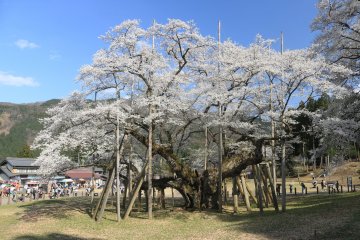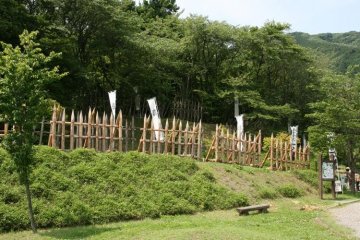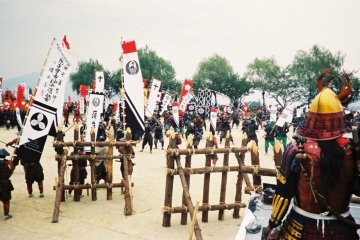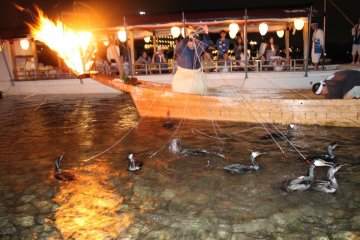When you think of Japanese culture, what images come to mind? Kimonos, sushi, samurai, or anime perhaps? What about mummies? Yes, mummies. When I first heard about these “self-preserved priests” it was another, “I have to go see one!” moment.
I was talking to my Japanese teacher about them, sokushinbutsu, and she said there was one in Gifu. Off the beaten path in the countryside north of Ogaki City, you can see one such mummy at Yokokura Temple (Built in 801) in Ibikawa. Last May I headed out there and it felt like I was on an adventure like the boys in the movie “Stand By Me” (a group of young boys go in search of a reported dead body.) sans any real dangers like a leech filled swamp. I decided to take the long way, one train and two buses from Ogaki Station. It was relaxing letting someone else do the driving, and watching the scenery slowly change from city grey to countryside green.
The first bus was already waiting when we arrived at Tanigumikuchi Station. It was a short ride to the next transfer point where there would be a little bit of a wait for the next bus so I walked up the road lined with little shops that led to Tanigumi Temple, the last of the 33 temples in the Saigoku Kannon Pilgrimage. However, I was focused on seeing the mummy so I only went as far as the main gate just to make sure I’d have enough time to get back for the next bus. An old lady and I were the only ones waiting when it arrived.
It didn’t take long to get to Yokokura. With my mummy radar on, I quickly walked up the stone steps and passed through the gate trying to decide which way to go. Something told me to head left, and then I saw a sign with the word ミイラ(mee-rah) painted in small red characters. It means “mummy”.
Similar markers led me to a building across a small river. I’d made it! There was a small entrance fee which I gladly paid and made my way to the altar at back of the room where Myoujin was sitting encased in glass. (He died in 1817 at the age of 37.) There he was with his large skull hanging down to the left sitting with his legs crossed dressed in a robe. Some might find it a bit squeamish to look at a corpse, but I was so fascinated I couldn’t take my eyes off him I wondered how could someone choose to die that way, and what it must have felt like.
(A very brief explanation about how they died. The priests fasted themselves to death in order to attain enlightenment and be deemed a Buddha. The process had different stages and took years but towards the end the priest sat in a hole in the ground, and each day they would ring a bell to let the people above know that they were still alive. If the body was intact when they died then they were thought to have been successful. There seems to be variations on the process depending on the temple.)
I so wanted to take a photo, but sadly, it was prohibited. (If you’re curious there are several photos of other priests on the Internet). Plus, I thought it best to respect Myoujin-san, and avoid the chance of incurring any bad luck.
Before leaving I bought a kabocha charm to commemorate the adventure. I retraced my steps to check out the architecture of the main hall and three 3-story pagoda before heading back to catch the next bus. There were hardly any other visitors that day. I hear that they tend to flock there to see the cherry blossoms in the spring and the fall foliage. Also, on display at Yokokura are several important religious works of art.
So, my mummy hunt was a success. There are others scattered around Japan, mostly in the northern prefectures of Honshu. Pay a visit to one if you get the chance.










